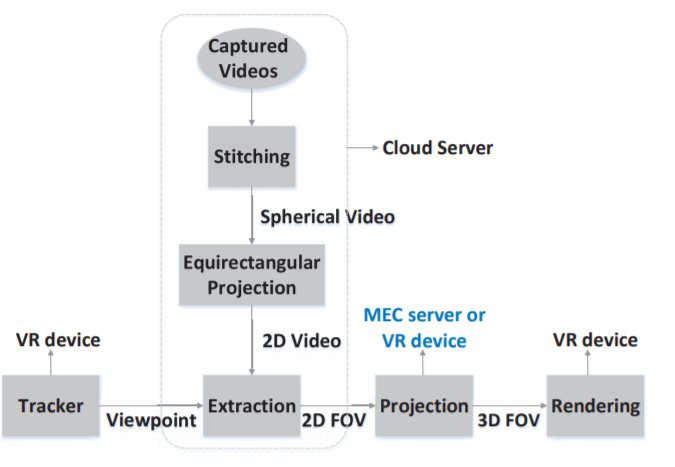Communications, Caching and Computing for Mobile Virtual Reality: Modeling and Tradeoff
PubDate: Jun 2018
Teams: Shanghai Jiao Tong University
Writers: Yaping Sun, Zhiyong Chen, Meixia Tao, Hui Liu
PDF: Communications, Caching and Computing for Mobile Virtual Reality: Modeling and Tradeoff

Abstract
Virtual reality (VR) over wireless is emerging as an important use case of 5G networks. Immersive VR experience requires the delivery of huge data at ultra-low latency, thus demanding ultra-high transmission rate. This challenge can be largely addressed by the recent network architecture known as mobile edge computing (MEC), which enables caching and computing capabilities at the edge of wireless networks. This paper presents a novel MEC-based mobile VR delivery framework that is able to cache parts of the field of views (FOVs) in advance and run certain post-processing procedures at the mobile VR device. To optimize resource allocation at the mobile VR device, we formulate a joint caching and computing decision problem to minimize the average required transmission rate while meeting a given latency constraint. When FOVs are homogeneous, we obtain a closed-form expression for the optimal joint policy which reveals interesting communications-caching-computing tradeoffs. When FOVs are heterogeneous, we obtain a local optima of the problem by transforming it into a linearly constrained indefinite quadratic problem then applying concave convex procedure. Numerical results demonstrate great promises of the proposed mobile VR delivery framework in saving communication bandwidth while meeting low latency requirement.

